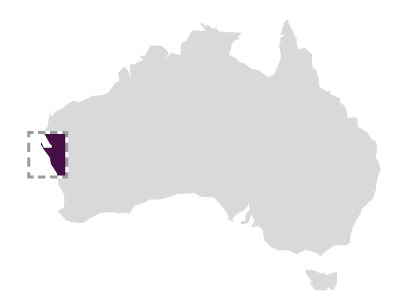Rapid (1811/01/07)
Ningaloo Reef

An American China trader wrecked at Ningaloo reef in 1811. The first example of an outwardbound American China trader to be examined from the archaeological perspective. Reported in the Columbian Sentinel dated 3 August 1811 to have had
$280 000 in specie on its outward journey from Boston.
Rapid departed Boston for Canton on 28 September 1810. After rounding the
Cape of Good Hope, sailed across the southern Indian Ocean and then
north-east towards North-West Cape on the Australian coast but was wrecked on the on 98th day of the voyage. The next day, a storm was raging and the crew set fire to the ship, sacrificing everything so that the wreck would not appear above water and attract other ships to the scene before the Captain could return to save the 280 000 American dollars being carried on board.
The entire crew of the Rapid reached Java alive, though a number died afterwards.
Captain Henry Dorr, his clerk and three sailors survived 37 days of deprivation in
the 16-foot, very leaky jolly boat with only limited rations. They found rats and
crabs to eat on Christmas Island en route to Bencoolen, but no water other than
rainwater that they collected in the sails. Six weeks after arriving in Batavia (Jakarta)
the opportunity of a passage home presented itself. The American schooner
General Greene had lost its captain and most of its crew at Batavia, so Henry Dorr
and part of the Rapid’s crew offered to navigate the schooner to America, arriving
in Philadelphia on 27 July 1811.
Salvage of the specie was a matter of immediacy for the owners of the Rapid. The
town of Boston was already suffering commercial distress, added to which were
the deteriorating relations between America and Britain that eventuated in war in
1812. Most of the specie was salvaged during the months after the wreck, the ship
Meridian transporting c. $91 000 to Canton in 1813, with more held by the salvagers
at Madras and Java. All but about 19 000 coins were salvaged in the months following the wrecking.
In 1978 a spear-fishing group comprising F. Paxman, B. Paxman, G. Dromey, and L Paterson discovered the wreck. During three seasons of excavation between 1979 and 1982 archaeologists from the Department of Maritime Archaeology, led by Graeme Henderson surveyed the ship’s timbers and removed the artefacts from within the hull, including 18 548 dollar size coins remaining Spanish silver dollars. Ship’s fittings, provisions and the personal possessions of crew members had survived in reasonable condition on the site. The hull survey provided sufficiently comprehensive data for the lines of the interior of the vessel to be reconstructed and the exterior to be estimated. The excavation provided information about a vessel type often referred to in the literature but never comprehensively described. A film ‘Wreck at Madman’s Corner, popular works and an exhibition at the Shipwreck Galleries ensued.
Ship Built
Country Built USA
Port Built Braintree
Port Registered Boston
When Built 1807
Ship Lost
Grouped Region Mid-West
When Lost 1811/01/07
Where Lost Ningaloo Reef
Latitude -22.739438
Longitude 113.692643
Position Information +GPS
Port From Boston
Port To Canton
Cargo Coins, 280.000 silver dollars
Ship Details
Engine N
Length 31.70
Beam 8.70
TONA 366.00
Draft 4.30
Museum Reference
Unique Number 389
Sunk Code Scuttled (burnt) after running aground.
File Number 2009/0184/SG _MA-12/78
Chart Number AUS 72
Protected Protected Federal
Found Y
Inspected Y
Date Inspected 2012
Confidential NO